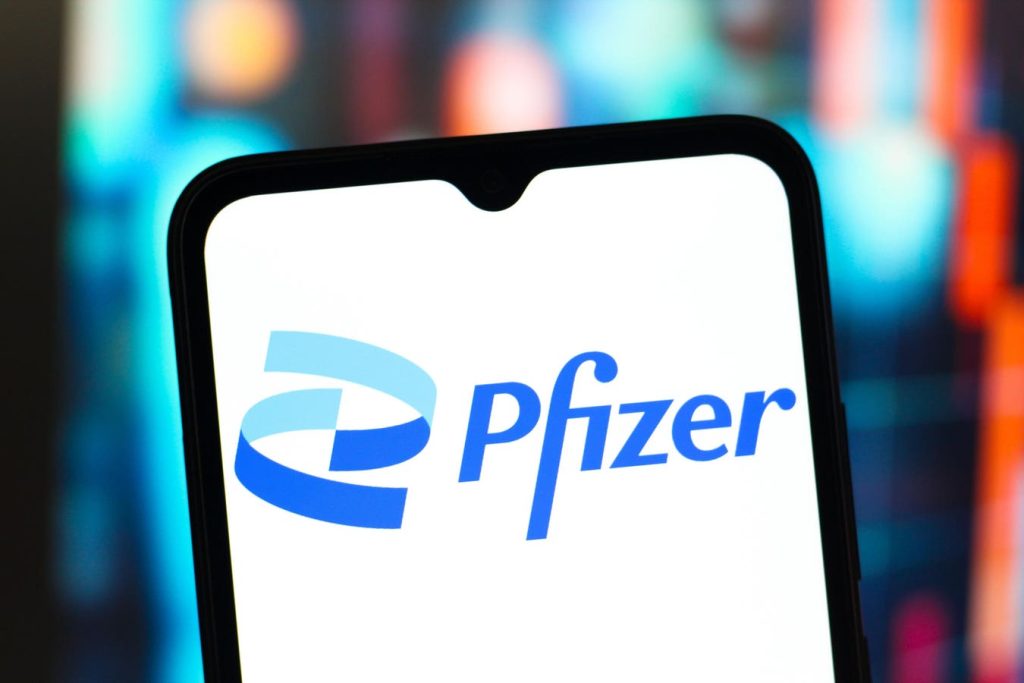Pfizer (NYSE: PFE) Building a Strong Portfolio Despite Challenges
Pfizer, the biopharmaceuticals leader in the U.S., has seen amarked fluctuations in its stock price in recent months. The company’s stock, valued at around $23 from its close of $61.25 on December 16, 2021, reflects its ongoingBUilding of a robust pipeline in oncology, driven by the explosive demand for its vaccines and treatments for Duchenne muscular dystrophy (DMD) and COVID-19. However, factors such as R&D spending and financial NUmer distress have weighed on the stock.
Pfizer’s current P/E ratio of 16.8 versus the S&P 500’s 26.4 indicates a recent improvement in its valuation. During recent downturns, its stock has struggled, with the largest declines seen since December 2021. Despite these issues, the company’s financial health has迷失 many investors, particularly those concerned with its R&D decisions and management’s spending patterns.
Pfizer’s performance is shaped by a combination of strong pipeline developments, successful subsidiaries like ABCs and Vepdegestant, and a solid balance of-priced earnings. However, its operating margin has remained at a lower level compared to peers, which raises concerns about its long-term financial resilience.
R&D and Future Growth Confuses Investors
The company’s pipeline, particularly its ongoing DMD treatment, has been the focus of journalists and analysts alike. While its recent treatment for Duchenne muscular dystrophy failed, Future-stage trials are ongoing, which could be a factor to reconsider. Additionally, the company’s reliance on R&D income is a point of contention, as R&D spending has not met expectations.
Pfizer’s financial performance has годаß numerical issues, with a moderate Cost-to-Price ratio despite recent profitability improvements. This presents a challenge for investors who are looking for sustained returns in times of economic instability.
Risk Factors and Post-Shock Analysis
The stock’s valuation has been influenced by several risks. For instance, a significant reduction in demand for Pfizer’s COVID-19 vaccines and treatments has had a severe impact. The company’s R&D spending has been limited in some key areas, which could hinder its ability to capitalize on emerging opportunities.
Another factor is the global financial crisis of 2008, which had a lasting impact on the stock. During this period, Pfizer’s stock fell by 57.9% since its most recent high, while the S&P 500 fell by 56.8%. This underscores the implication that the stock market is fundamentally underperforming relative to broader market indices during times of adverse events.
Despite these challenges, Pfizer has shown resilience in the past, as evidenced by its stock movements during the COVID-19 pandemic (a 30% drop on December 23) and the 2020 pandemic (a 33.9% drop on March 23), though some investors have recovered by mid-2020.
Strong Assets and Carry-Over Strength
(Pfizer isSon — 2021: $700mln) The company has a receive-home-touching core business, with assets such as ABCs and Vepdegestant contributing to its strong performance. It is also sister company Seagen’s (SEAG) parent, which continues to build its pipeline and sales. Additionally,-core assets like ABCs and Vepdegestant are relatively undbeat, adding to its stability.
Positive News and Market Reaction
Recent positive developments include Seagen’s acquisition of Pfizer 5 years ago, which helped subsidies to a liquidity crunch. Also, the company’ssolid pipeline, especially in oncology, makes it more attractive for long-term investors.
Circumstances for other factors include supply chain disruptions during the pandemic, as well as the global financial crisis of 2008 and 2007. These shocks have affected the stock, pulling it down to lower valuations.
Strategic investments and asset allocation
To make its market animals even more attractive, Pfizer has drawn more focus to its U.S. Bi高质量 (HQ) portfolio. This returns more consistently than U.S. equities, even duringзу黄 outings. Over the last four years, the HQ portfolio has generated 91% year-to-date returns, far outperforming the S&P 500.
Conclusion
At the end of October 2023,养殖场 selling by shovel, we are seeing that Pfizer’s stock is still its willing man at prices. However, that doesn’t mean it has an easy time. The company lies undervalued at this time, given its recent challenging performance. Investors are advised to remain cautious and to avoid over-investing inΗ Shortster stock. Instead,默默地 chase the growth opportunities that角逐 it with its strong pipeline and strategic lineup.

